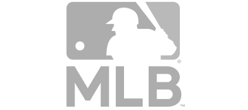Some auditors continue to struggle with appropriately selecting and testing journal entries in their audits of financial statements. Specifically, for audits of public companies, the Public Company Accounting Oversight Board (PCAOB) indicates that it continues to find many deficiencies pertaining to the examination of journal entries (or other adjustments) for possible fraudulent material misstatement.
The PCAOB has issued a staff publication, Audit Focus: Journal Entries, which provides reminders to auditors, especially those who audit smaller public companies, from the applicable PCAOB standards that address journal entry testing. The guidance also addresses common deficiencies related to journal entry testing and good practices that have been noted by the PCAOB.
The staff guidance represents the views of the PCAOB staff and is not a rule, policy, or statement of the Board.
Applicable PCAOB Standard and Requirements for Journal Entry Testing
Material misstatement due to fraud in financial statements might occur through inappropriate or unauthorized journal entries made throughout the year and/or at year end. PCAOB AS 2401, Consideration of Fraud in a Financial Statement, requires auditors to design procedures that include examining journal entries and other adjustments for evidence of possible fraud. The PCAOB staff guidance provides reminders regarding the following requirements found in AS 2401:
- Understanding the financial reporting process and controls over initiating, authorizing, recording, and processing journal entries in the general ledger, subsidiary ledger, or other IT systems.
- Examining journal entries for evidence of material misstatement due to fraud.
- Testing the listing of journal entries for accuracy and completeness.
- Using professional judgment when determining the nature, timing, and extent of journal entry testing.
- Inquiring of appropriate employees regarding unusual or inappropriate activity in the journal entry process.
Common Deficiencies Found in Testing Journal Entries
The staff guidance notes the following common deficiencies that have been found in PCAOB inspections:
- Failure to obtain an understanding of the financial reporting process and controls over journal entries.
- Not identifying and selecting journal entries for testing.
- Not testing the completeness of the journal entry population.
- Failure to test any of the journal entries that met the auditor’s fraud criteria or inappropriately limiting journal entry testing.
- Not providing evidence of the rationale of how factors in AS 2401 resulted in the identification of fraud risk criteria, including considering manual versus automated journal entries.
The PCAOB staff guidance outlines certain good practices that audit firms have used in testing journal entries. These include—
- Using an IT specialist to aid in understanding the financial reporting process and the controls over, identification of, and completeness of journal entries.
- Providing staff training on AS 2401, including guidance on the characteristics of potentially fraudulent journal entries.
- Using journal entry practice aids and structured templates for determining and documenting journal entry selection and testing.
- Implementing review programs focused on journal entry testing.
- Using software audit tools that address identifying journal entries for testing and their completeness.
© 2025 Thomson Reuters/PPC. All rights reserved.




















